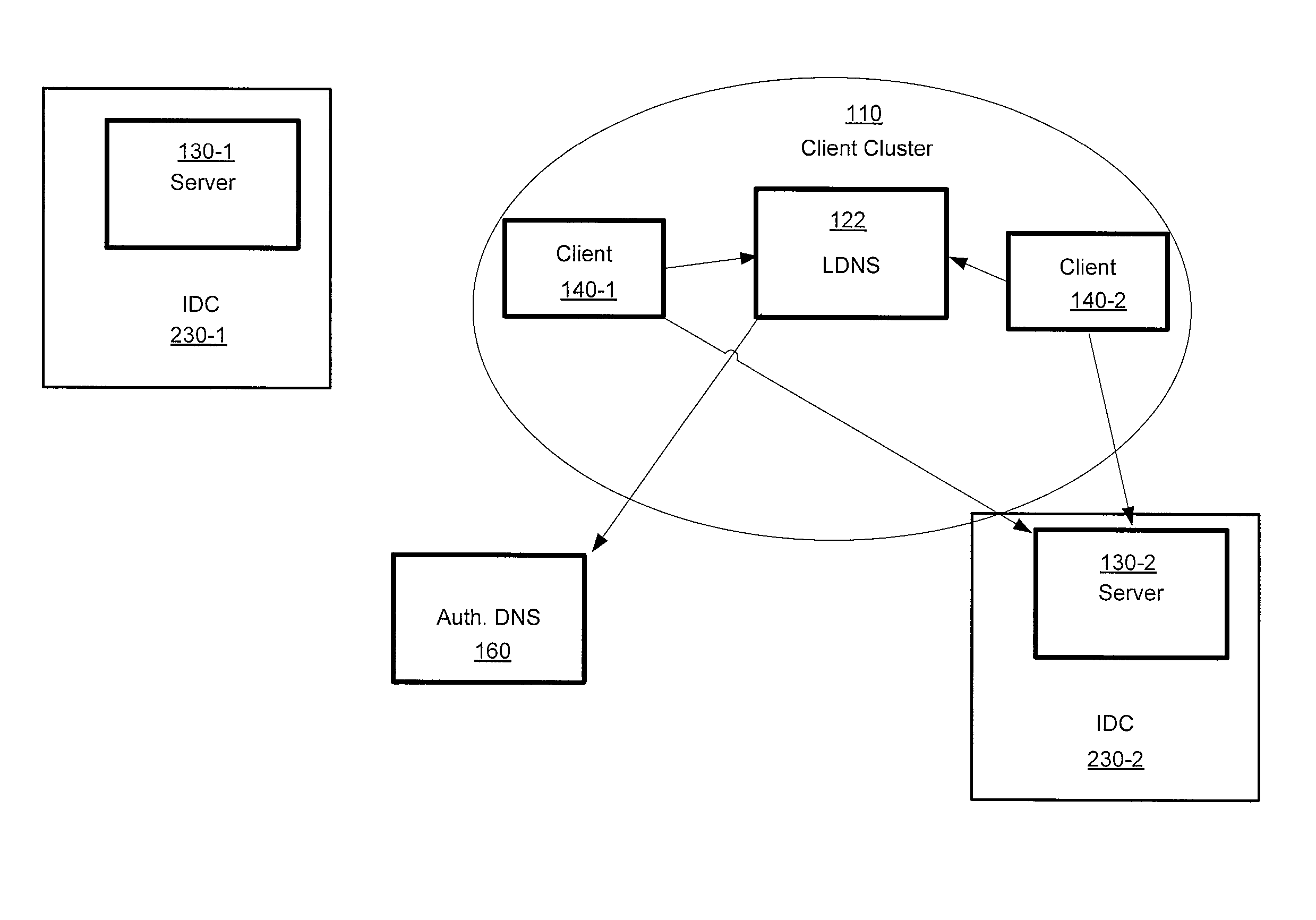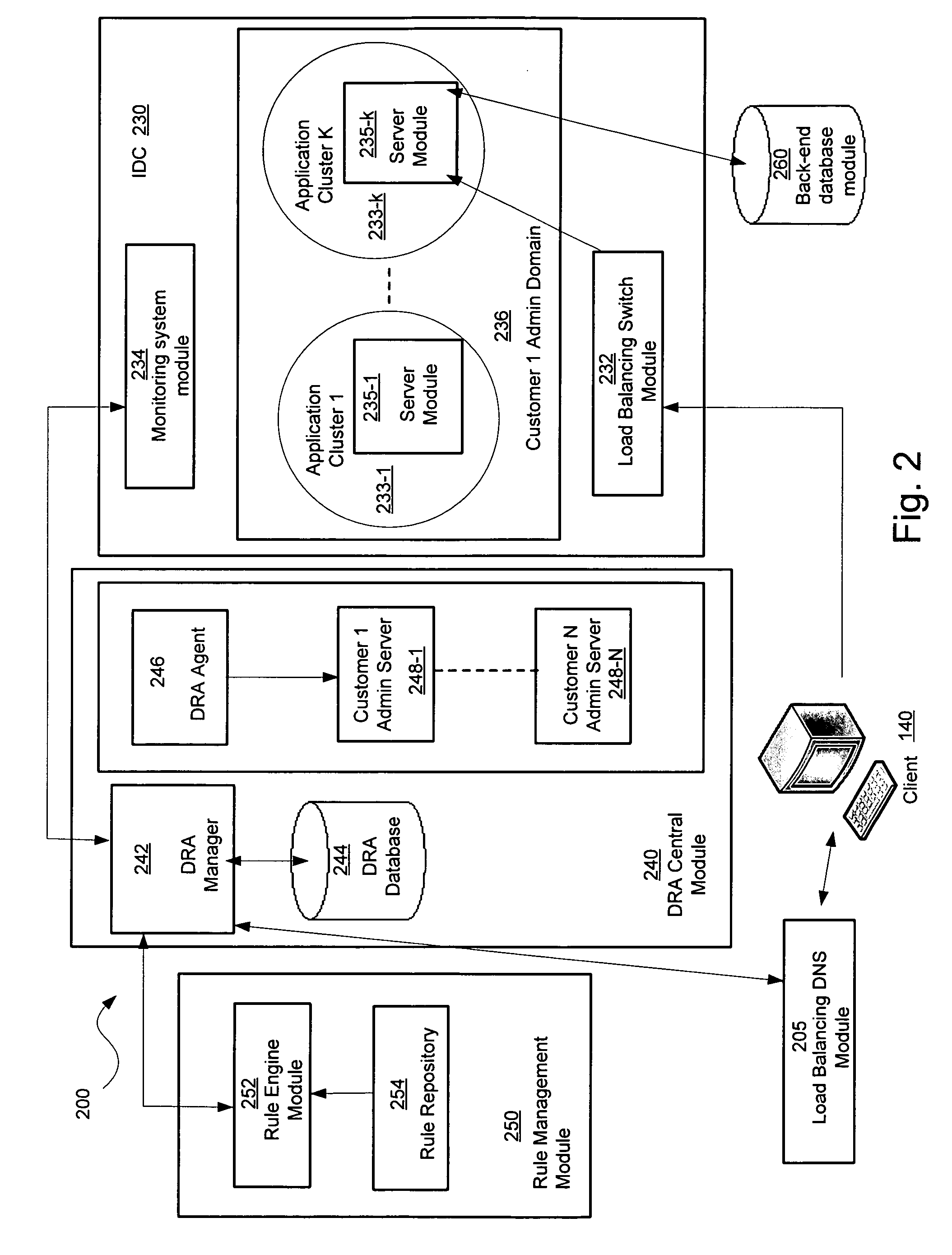Monitoring for replica placement and request distribution
a replica and request technology, applied in the field of distributed computer resources, can solve the problems of exposing any site to almost unlimited clients, affecting the service life of the site,
- Summary
- Abstract
- Description
- Claims
- Application Information
AI Technical Summary
Benefits of technology
Problems solved by technology
Method used
Image
Examples
Embodiment Construction
[0021]The replication and consistency maintenance of Internet objects has been studied previously in the context of Internet caching and content delivery networks. One solution has been to migrate the computation from the front-end servers to the clients accessing the information, a process known as edge computing. For example, U.S. Pat. No. 6,021,426 to Douglis et al. discloses such a method and is incorporated by reference in its entirety herein. While such a process can be useful in optimizing the transfer of dynamic Internet pages to the clients, it is insufficient to meet the computing needs of Internet applications.
[0022]To address and aid problems encountered in providing Internet applications, aspects of the present invention are disclosed. In an embodiment, a platform provides an architecture that facilitates resource sharing based on network telemetry and the changing demands of and for applications. Its architecture features a rule management system that provides a clear ...
PUM
 Login to View More
Login to View More Abstract
Description
Claims
Application Information
 Login to View More
Login to View More - R&D
- Intellectual Property
- Life Sciences
- Materials
- Tech Scout
- Unparalleled Data Quality
- Higher Quality Content
- 60% Fewer Hallucinations
Browse by: Latest US Patents, China's latest patents, Technical Efficacy Thesaurus, Application Domain, Technology Topic, Popular Technical Reports.
© 2025 PatSnap. All rights reserved.Legal|Privacy policy|Modern Slavery Act Transparency Statement|Sitemap|About US| Contact US: help@patsnap.com



